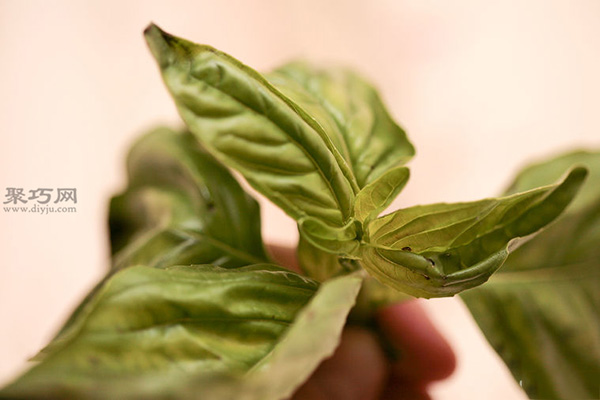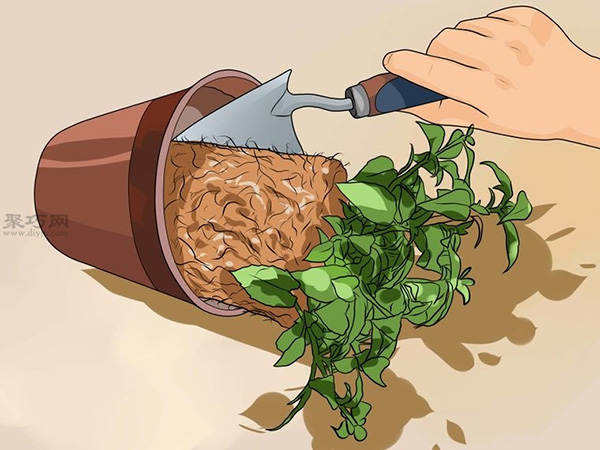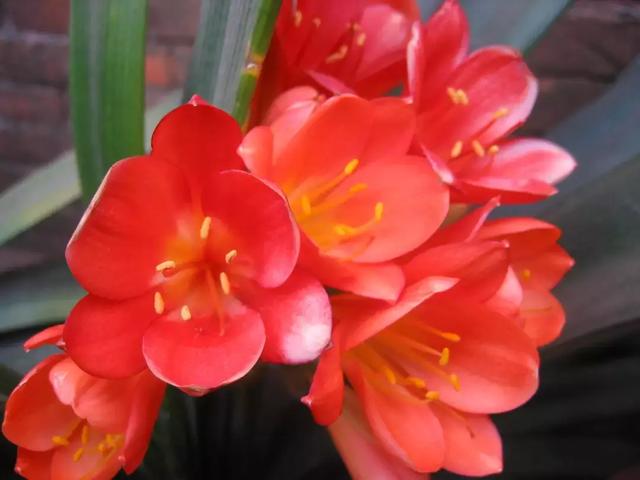Diagram of how to sow basil and plant basil
Basil is an aromatic seasoning that has a magical effect on ordinary cuisine and is easy to grow. Fresh basil and dried basil taste very different, even like two completely different herbs. Of course, fresh basil is more delicious than dry basil. Read this article to see how to plant and harvest basil.
How to sow basil is part of a series of tutorials on planting basil, which also includes sowing, taking care of basil, harvesting and using basil. If you want to know how to sow basil, follow the illustration of this tutorial on planting basil on Juqiao.
How to sow basil

Choose the variety you want to plant. Basil has many varieties, each of which has a different fragrance. Check the relevant information and find one or more varieties you like to plant. You can buy the corresponding seeds from the florist. Let's take a look at our recommendation:
Cinnamon basil has a sweet taste and can produce beautiful flowers with charming fragrance.
Lemon basil contains citral. Citral is the aroma component of citrus fruits, and lemon basil also has a strong lemon flavor.
Purple basil is used as an ornamental with charming fragrance and gorgeous flowers.
Some basil are perennial and will continue to grow the following year after withering. Examples include African blue basil (which has blue textures on its leaves) and Thailand basil. But most basil is a year old, and you have to plant a new batch every year.
Greek basil and vanilla basil are difficult to raise, but they can grow small bundles of compact leaves, which are suitable for ornamental and gardening.
Sow seeds indoors 4-6 weeks before the last frost. Basil likes to be warm and sunny, and it is safer to sow seeds indoors, which can prevent basil from being attacked by frost.
If you live in a hotter area, you can also sow seeds outside.
If you don't know when the last frost will be, check the perpetual calendar or ask your local gardener.
Containers and soil ready for sowing fill square pots or separate containers with the same amount of vermiculite, perlite and peat. Gently press the soil to remove air. Wet the soil with water to prepare the right environment for seed germination.
Sow one or two seeds in each container and gently cover with a layer of soil. Wrap the flowerpot with plastic film to keep the soil moist. Put the flowerpot under the window of the morning sun, uncover the film twice a day, and sprinkle water into the soil to keep it moist.
Remove the plastic film after the seed germinates. When you see the first bunch of tendril-like green seedlings coming out of the soil, it is time to remove the film. Water the buds twice a day and don't let the soil dry out completely. When the plant grows to a few centimeters tall and the leaves gradually mature, the basil can be moved to a large container.
DIY Tips
If basil's seedlings are slender and slender, it may be that there is not enough sunlight.
Basil can also be planted directly in the garden, so you don't have to cultivate them in advance, so you can choose fast-growing varieties, such as lemon basil. But in fact, all basil grows very fast and is so productive that you don't need to plant it in advance.
When sowing seeds directly in the garden, make sure the surface of the soil is moist. But there are some rules against overwatering, saying that the surface of the soil should be kept slightly dry. But you must pay attention to the degree of dryness. Seeds or seedlings without deep roots are very fragile, and once the soil is dry for a few hours, it will do a lot of damage to them.
Water basil moderately and water the flowers twice a day with warm water until basil grows up.
You can also cross-cultivate basil with other plants. Basil is said to enhance the flavor of tomatoes and pepper and protect against worms and aphids.
Matters needing attention
Don't wet the leaves when watering. Unless you are doing leaf spraying or foliar fertilization-leaves can sometimes be infected with insect pests.
Don't ignore the opportunity to plant basil. Basil has many unexpected varieties. Choose the one that is most useful and interesting for you.
When moving basil from indoors to the garden, make sure you have gradually adapted basil to the outdoor environment, rather than suddenly moving outdoors so that basil cannot adapt to changes in the environment.
Time: 2019-05-08 Click:
- Prev

How to transplant the inverted Golden Bell into the Garden and learn the steps of planting the inverted Golden Bell
How to transplant the inverted golden bell to the garden is part of a series of tutorials of planting the inverted golden bell, which also includes starting planting, transplanting the inverted golden bell to the garden, daily care, and want to know how to transplant the inverted golden bell into the garden. Follow Juqiao net to learn the steps of planting an inverted golden bell.
- Next

How to raise a gentleman orchid
Gentleman orchids should learn to keep it this way in summer. For many flower lovers, the summer heat is a terrible existence, and many flowers will be killed unknowingly. For gentleman orchid, do you know how to maintain it in summer? Maintain the environment in summer, the weather is very hot
Related
- Fuxing push coffee new agricultural production and marketing class: lack of small-scale processing plants
- Jujube rice field leisure farm deep ploughing Yilan for five years to create a space for organic food and play
- Nongyu Farm-A trial of organic papaya for brave women with advanced technology
- Four points for attention in the prevention and control of diseases and insect pests of edible fungi
- How to add nutrient solution to Edible Fungi
- Is there any good way to control edible fungus mites?
- Open Inoculation Technology of Edible Fungi
- Is there any clever way to use fertilizer for edible fungus in winter?
- What agents are used to kill the pathogens of edible fungi in the mushroom shed?
- Rapid drying of Edible Fungi

